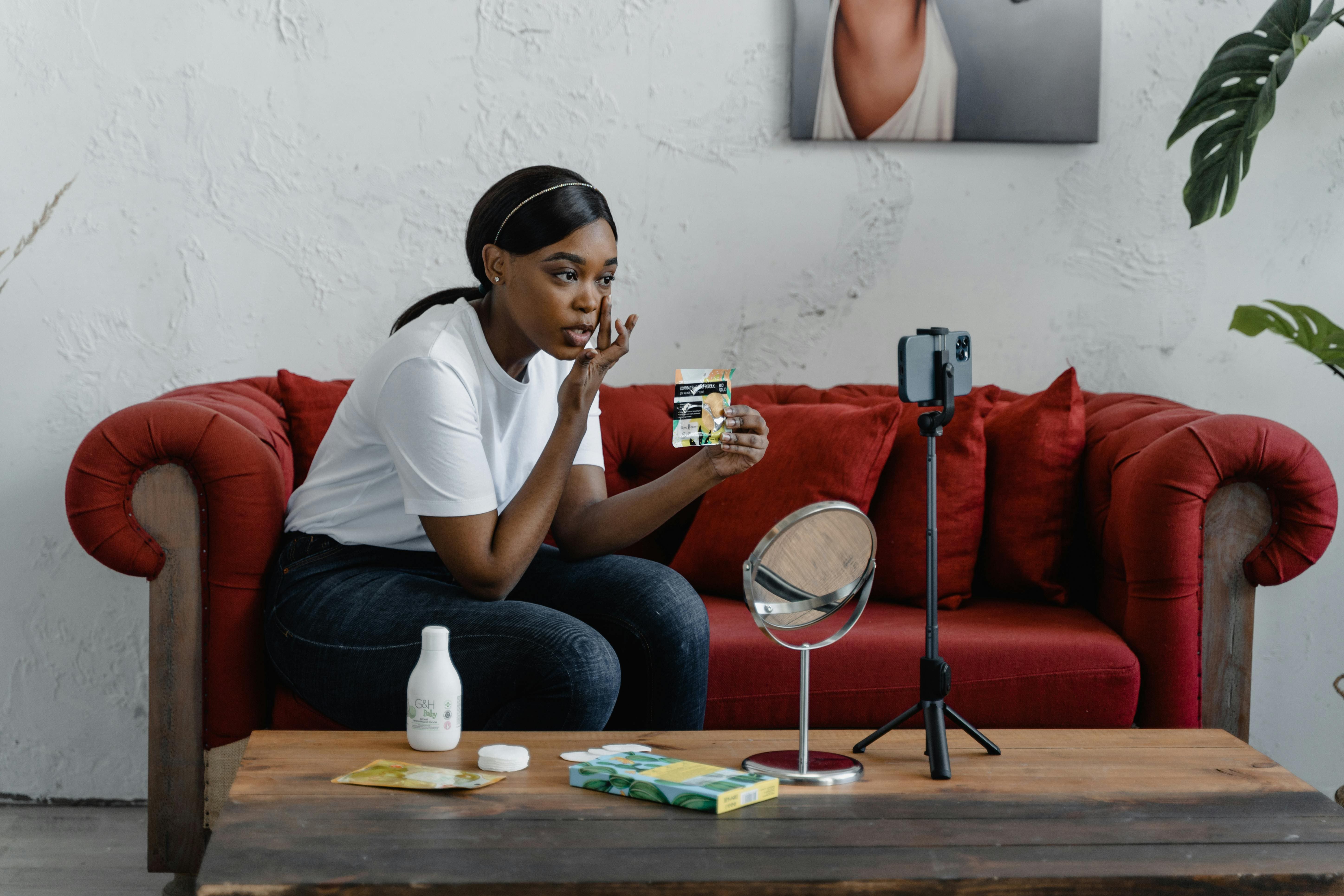If your wellness brand isn’t on the hunt for a fitness micro-influencer to hit a yoga pose on your mat or chug your protein post-workout, what’s the holdup? Fitness and nutrition brands earn big props when influencers promote healthy lifestyles using the company’s workout gear, athleisure or nutrition products. Micro-influencers with 1K to 100K followers hit the sweet spot for engagement, community building and other benefits that fitness brands can’t ignore.
If you’re on the fence about building a micro-influencer community around your brand, read on to learn the perks of these partnerships and how to get these engagements started.
The Benefits of Micro-Influencers for Fitness Brands
Micro-influencers are having a moment, which is likely why nearly 64% of brands confirm they plan to partner with influencers in 2025. While most content creators increase brand awareness and help drive revenue, micro-influencers are especially helpful for community building, customer loyalty and long-term business growth. People working toward health and wellness goals often seek support from an online community, and the brands that deliver this thrive.
High Engagement Rates
Micro-influencers yield between a 7% and 20% engagement rate, according to Marketing Profs. Unlike a macro-influencer with a million-plus follower count, a micro-influencer speaks to a tighter-knit community that welcomes posts tailored to a specific interest or lifestyle. This focused content encourages followers to actively participate in discussions and share fitness advice or product recommendations with friends. E-commerce wellness companies are more likely to receive genuine interest from followers who feel connected to spokespeople who consistently engage them.
Relatable, Authentic Influencer Content
Micro-influencers live seemingly ‘regular’ lives, often work full-time jobs and present themselves as relatable, everyday people sharing healthy eating advice and killer fitness routines. These content creators aren’t celebrities, and they don’t produce polished, branded ads. People trust micro-influencers’ product recommendations, workout tips and meal prep suggestions because these posts feel like advice rather than paid promotions. Trust creates lasting relationships, helping the endorsements for fitness and wellness brands drive sustainable growth.
Cost-Effective Marketing Campaigns
Micro-influencers are more affordable than macro- or mega-influencers, and as we stated above, these partnerships garner excellent engagement. Wellness brands relying on micro-level health or fitness experts maximize their investment without overspending, leaving funds to collaborate with multiple influencers rather than one high-cost creator. This community of fitness followers offers powerful brand-building power and increases revenue streams.
Access to Niche Audiences
Micro-influencers cover every fitness personality, from gym equipment gurus to nutritional experts and meal plan specialists, and each of these comes with a highly focused following. This allows companies to scale their marketing efforts to target influencers with adjacent interests. When a brand creating nutrient-rich snacks for the fitness crowd partners with an influencer popular with busy, active moms, its product reaches beyond the fitness space into family markets. Both demographics will likely become customers due to their connections with trusted micro-influencers recommending the brand.
How To Integrate Influencers Into Marketing Campaigns
Content creators offer various promotions and paid sponsorship posts and work across many social networks, which can create uncertainty about how exactly to use these individuals. Your business objectives will ultimately define whether you’ll contract with an influencer for traditional sponsored posts, specialty events or some combination. Here are a few options for micro-influencer campaigns to consider incorporating into your marketing plan:
Product Launches
Fitness brands enjoy successful product launches when they partner with micro-influencers who can tease the product to followers, host a live unboxing when the item launches and share sponsored posts with shoppable links that make it easy for their followers to purchase. Companies sustain interest by reposting this user-generated content across other channels, including email, the company’s website and branded social feeds.
Social Media Takeovers
During a social media takeover, influencers assume control of a brand’s Instagram, TikTok or YouTube account to engage with followers and share content from a new angle. These takeovers are often mutually beneficial because both parties reach a new audience and interact with an interested community of followers. A fitness micro-influencer could livestream a morning workout to a kettlebell company’s audience, or the content creator could show their routine and must-have products through a ‘day in the life’ series posted to a brand’s social feed.
Affiliate Marketing Campaigns
Creating a discount code for micro-influencers to share with their fitness followers can help wellness brands drive traffic to their websites and generate sales. Companies can use these trackable links to understand campaign performance and create lasting relationships with influencers who usually receive a small commission. According to Authority Hacker’s statistics, affiliate marketing accounts for 16% of all internet orders in the U.S., and 81% of brands use these programs to reach awareness and sales goals.
Contests and Challenges
Social media contests encourage users to engage with brands by liking their page, following the account, contributing user-generated content or sharing the post with their friends. Influencer-led contests can increase a campaign’s reach to amplify the brand’s followers or grow their subscriber list — and revenue. The giveaway campaign for the brand Ice Barrel saw a 6x ROI thanks to authentic content and a powerful influencer strategy. Challenges are also excellent ways to engage your audience. Invite an influencer to participate in a squat, plank or push-up challenge alongside your followers and use the momentum to grow awareness of your recovery drink or nutrition bar.
Starting a Fitness Influencer Engagement
Influencer marketing builds authentic communities for fitness brands that can help companies reach their audience and revenue goals. These online stars can help you gain traction on an unexplored social channel, grow a new business or bring attention to a signature product line — if the startup is strategic.
Define Your Goals
Your social media strategy won’t have a clear direction if you don’t first define your goals. Whether objectives are to increase brand awareness, drive website traffic or boost sales, all influencers and company stakeholders should be on the same page to gear campaigns and spending accordingly.
Set a Budget for Influencers
Fitness brands should only use their entire influencer budget on micro-influencers if doing so aligns with the company’s marketing goals, such as community building and incremental sales. If the wellness brand’s objectives are to reach a broader audience, some of that cash should be saved for macro content creators who specialize in reach.
Locate Niche Influencers
The benefit of micro-influencers is that these personalities attract a specific, targeted audience interested in certain activities and solutions. If your product fits the bill, there’s a high likelihood these followers may connect with your fitness brand and purchase.
If finding a niche influencer out of the hundreds of thousands of social media fitness stars feels like the proverbial needle in a haystack, you’re not wrong. Brands may need to try a few of these methods to discover the right fitness micro-influencer for their goals:
- Explore your followers. Some of your best followers may already be nano-influencers. Start by analyzing your audience to find people frequently engaging with your posts and sharing content featuring your products, then invite them to partner up.
- Create a brand ambassador program. Recruiting individuals to join a brand ambassador program and incentivizing them to promote your products can be hugely successful and efficient. Lounge Wagon’s viral influencer post from its ambassador program brought them a crop of new followers — and sold out their stock.
- Lean on AI and influencer platforms. According to an Influencer Marketing Hub report, more than 60% of brands plan to use AI or machine learning to identify influencers or create campaigns. Other options are influencer directories or third-party platforms.
- Connect with a fitness influencer agency. These experts can help you navigate any method above, including developing an ambassador program, plus assist with influencer contracts and even create content in-house.
Vet Influencers
Partnering with someone who doesn’t share your brand’s viewpoints or isn’t a good fit for your audience can jeopardize your campaign’s success. Fitness brands must research candidates’ values, fitness messaging, audience demographics and post styles to understand whether these micro-influencers will help the brand reach its goals. You’ll need to beware of fake influencer accounts and personalities who aren’t as engaging or motivated as they may present themselves to be.
Contract and Hire Micro-Influencers
Creating an influencer agreement is a must to protect your brand’s interests and govern the partnership. A micro-influencer contract for fitness brands must clearly state compensation and payment procedures, performance obligations and termination grounds, and it should establish exclusivity rules for the content. This is one area where a fitness influencer agency can be instrumental in structuring the influencer deal to communicate the scope of work and target metrics and account for any necessary legalities.
Signing the influencer agreement may feel like the end of the process, but it’s actually the beginning of a profitable, professional relationship. The right fitness micro-influencer can build a wellness brand’s community and create a lasting partnership for long-term, sustainable revenue. If you’re ready to start, contact Joybyte to find the perfect strategic partner for your fitness brand’s marketing initiatives.
YOU MIGHT ALSO LIKE:




